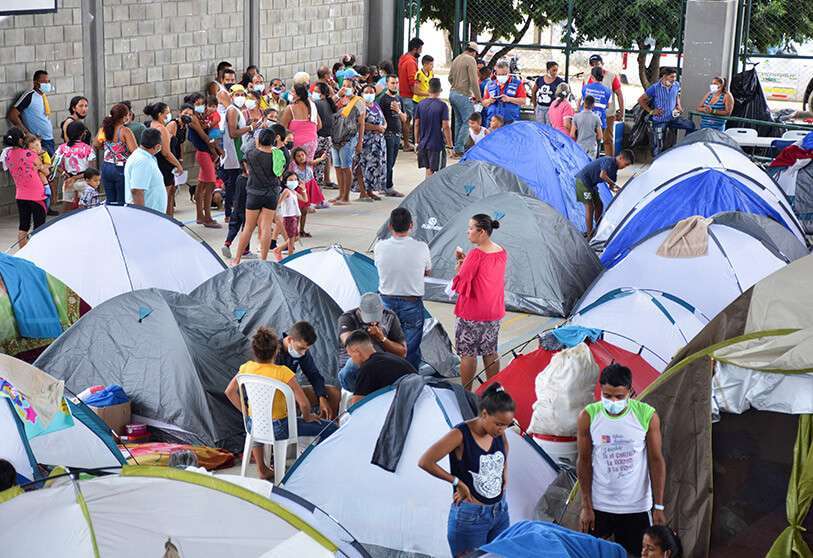Armed groups displace 3,700 farmers in Colombia

In rural Colombia, to which the progress of the big cities turns its back, is the periphery of a country where weapons continue to be fired. It is as difficult to talk about the numbers of victims, threatened or persecuted as it is to reach the remote regions of Colombia where violence is once again gaining strength. Nobody knows if these numbers, which are constantly growing, are all there. While the authorities look the other way and the crimes go unresolved, the peasants live in an eternal exodus, trapped between the violence and the torrential rains that lash the region and cut them off from the rest of the country by land and air.
Thousands of inhabitants of the Colombian municipality of Ituango, a town in Antioquia, in the western mountain range of Colombia, are synonymous with the endless exodus faced by its inhabitants, who have lived in an eternal displacement by different armed groups. This time, more than 3,700 peasants are fleeing from the death decreed by the paramilitary group Clan del Golfo - the largest criminal gang in the country - and the dissidents of the FARC, who are fighting for control of a territory where coca crops and illegal mining, which according to the Colombian government are the main fuel for the violence that plagues this part of the country.

The fertility of this tropical land is also fertile for war. The peace agreement with the FARC was, beyond an attempt to end the war, an opportunity to destroy its foundations. During half a century of armed conflict, recycled from the previous civil wars between liberals and conservatives, the violence has been compounded by the ELN guerrillas, who have not stopped growing since the end of the FARC, as well as the heirs of the paramilitaries, whose armed wing is the AGC and which the authorities call the Clan del Golfo (Gulf Clan).
Violence persists in several regions. In some, armed groups have filled the vacuum left by the rebels, while in others dissidents lurk. Paramilitary groups demobilised in 2004 but recycled themselves under other names. So did the FARC in 2016, after years of dominating territory. And now the dissidents of this guerrilla group, made up of those who did not join the peace process, are fighting for territory with groups such as the Clan del Golfo or the Autodefensas Gaitanistas. According to journalist Catalina Oquendo, their targets are peasants and ex-combatants who remain firm in the peace process.

The territory has gained importance for the illegal armed groups because it connects the departments of Antioquia, of which Ituango is part, Cordoba and Chocó, and also because it provides access to the Pacific and the Atlantic. The situation in Ituango is getting more complicated as the hours go by because the town's inhabitants are beginning to suffer from shortages because the roads are blocked by landslides caused by the rains, which also prevent the arrival of helicopters and planes.
One of the Territorial Training Spaces (ETCR) was set up in the area, where former FARC guerrillas were to make their transition to reintegration into society. Its history is also the story of the vicious circle of war in Colombia. In the 1980s, the FARC guerrillas were present; at the end of the 1990s, the Self-Defence Forces disputed the territory and committed massacres.

Ituango experienced a similar situation only half a year ago when these two armed groups clashed again in February, causing hundreds of people to leave the villages. Even then, social organisations denounced that this type of attack occurs periodically and that once a year peasants have to abandon their homes, farmland and livestock to flee the violence, and now this period is being shortened.
A UN document reveals that this year some 3,052 people were displaced in the departments of Antioquia, Nariño and Cauca in the midst of nine violent events. With these figures, Colombia has 44,647 displaced Colombians in the first half of the year alone and 87 violent events. The UN report also highlights the natural emergencies that have affected 43,909 people in four departments of the country in June alone. This represents 44% of the total reported for the whole of 2021.
Latin America Coordinator: José Antonio Sierra.









